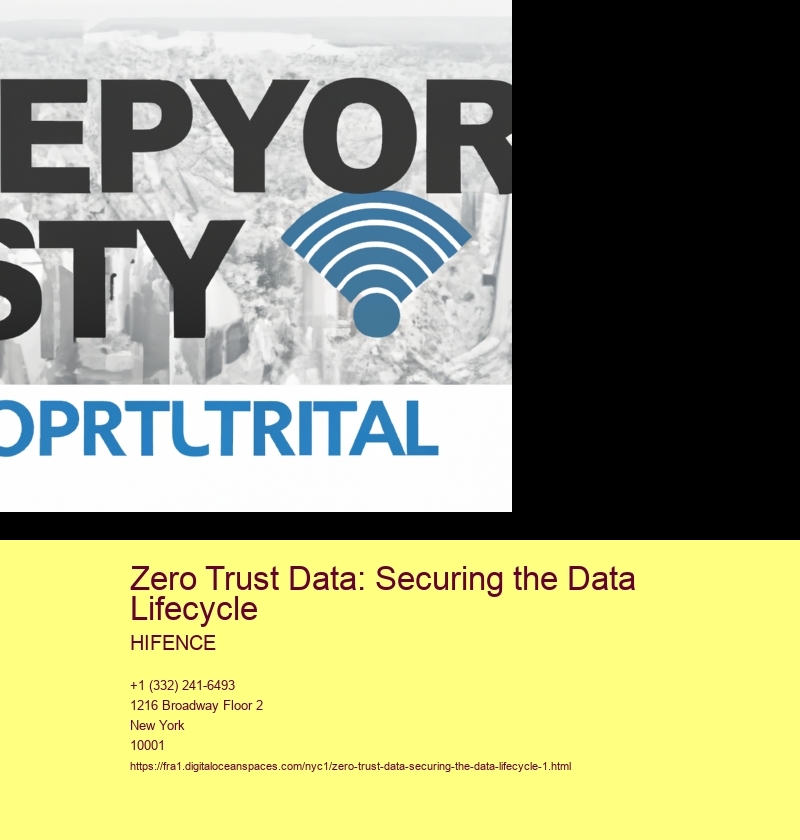Zero Trust Data: Securing the Data Lifecycle
managed it security services provider
Zero Trust Data: Securing the Data Lifecycle
The digital world thrives on data. Data Governance: The Key to Data Security . Its the lifeblood of modern organizations, fueling insights, driving decisions, and powering innovation. managed service new york But this valuable resource is also a prime target for malicious actors, making data security paramount. Enter Zero Trust Data – a security paradigm shift that fundamentally alters how we approach data protection throughout its entire lifecycle (from creation to deletion!).
Traditional security models often operate on a "trust but verify" approach within the network perimeter. Once inside, users and devices are often granted broad access to data. managed services new york city Zero Trust, on the other hand, flips this script. It operates on the principle of "never trust, always verify." This means that every user, every device, and every application accessing data is treated as a potential threat, regardless of their location or network access.

The core tenet of Zero Trust Data is that no one, and nothing, should be inherently trusted. Instead, access is granted on a least-privilege basis after rigorous authentication and authorization. This verification process (often involving multi-factor authentication and continuous monitoring) is crucial at every stage of the data lifecycle. Think of it like this: every time someone wants to unlock a door to a specific room containing sensitive information, they need to show the right credentials and demonstrate a valid reason for entry.
Securing the data lifecycle with Zero Trust involves several key strategies. First, data discovery and classification are essential. You need to understand what data you have, where it resides, and how sensitive it is. (This often involves automated tools that scan data repositories and apply appropriate labels.) Next, strong authentication and authorization mechanisms are implemented to control access to data.
Zero Trust Data: Securing the Data Lifecycle - managed service new york
- managed it security services provider
- managed services new york city
- managed service new york
- managed services new york city
- managed service new york

Furthermore, data encryption is crucial, both at rest and in transit. (Imagine your data traveling through the internet protected by an impenetrable shield.) Continuous monitoring and logging are also essential to detect and respond to suspicious activity. This allows you to identify potential breaches early on and take corrective action before significant damage occurs. Finally, data loss prevention (DLP) tools can help prevent sensitive data from leaving the organizations control.
The benefits of adopting a Zero Trust Data approach are numerous. It reduces the attack surface, limits the impact of breaches, and improves compliance with data privacy regulations. (Think GDPR, CCPA, and other stringent regulations.) By implementing granular access control and continuous monitoring, organizations can significantly reduce the risk of data breaches and protect their valuable assets.
However, implementing Zero Trust Data is not a simple task. It requires a comprehensive assessment of the organizations security posture, a clear understanding of its data flows, and a phased approach to implementation. Its a journey, not a destination, and requires ongoing commitment and adaptation.
Zero Trust Data: Securing the Data Lifecycle - managed service new york
- managed service new york
- managed service new york
- managed service new york
- managed service new york
- managed service new york
In conclusion, Zero Trust Data is a critical security imperative in todays threat landscape. By embracing the principle of "never trust, always verify" and implementing robust security controls throughout the data lifecycle, organizations can significantly reduce their risk of data breaches and protect their most valuable asset – their data!
